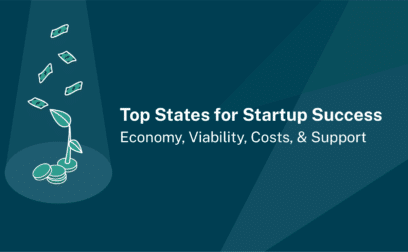If you’re thinking about launching a business or product, doing your research and assessing how many potential customers you might attract is absolutely crucial if you want to be confident of success.
As part of this, you’ll need to know how to calculate market size. This guide explains what market size is, how to calculate it and why it’s important.
What is market size?
Market size simply means the number of potential customers you could sell your product or service to. In other words, it’s the size of the sales opportunity available to you.
As an example, it could be the number of people visiting a high street who could become customers of a new ice cream parlour, or the number of car owners in your area that could use a new car washing service.
There are two types of market size to calculate as well as your business’ expected share.
The first type is the total addressable market (TAM). In a nutshell, this means finding out whether the potential market for your business is large enough. It’s the number of customers or amount of money you could earn if your business achieved a 100% success rate and 100% sales to every potential customer.
The second is the target or available market, which is the size of the market that your business can realistically reach. It might also be referred to as the Segmented Addressable Market (SAM).
The expected share of market is also worth adding to the above calculations. This helps you to work out what share of the market you want to aim for and what you are expecting your business to achieve.
Why is market size important?
Market size is important because it helps you determine whether your investment is worth it. If you know there are only 100 people who would be interested in your product, you can assess whether this will be worth the cost of manufacturing and distributing the product, for instance.
Knowing how many people your business can reach will also help you work out how much revenue you might generate and therefore how much profit you can make.
How do I calculate market size?
Take a look at the steps below to help you calculate market size.
Define your target audience
First of all, you need to think about the type of customer your product or service will attract and create a profile. Think about their key characteristics, such as their:
- Age range
- Location
- Education
- Income bracket
As part of this, it’s also worth doing a bit of desk research. For example, if you’re launching a new range of healthy snacks, you might want to find out how many people in the US are overweight, as well as how many people are trying to live a healthier lifestyle and why. You might also want to find out what products they currently use to eat more healthily.
Research wider market size
Next, you’ll need to conduct some wider market research to find out as much as possible about your chosen industry. Look for available data from sources such as Census data, industry reports and government whitepapers.
Look into how much your chosen industry is worth and how much is spent annually on specific product types and average prices. Understanding more about your industry can help you work out who your competition is.
Review the potential value of your product or service
To understand the potential value of your product, you need to understand the benefits. While the features of the product are what your product does, the benefits are the results – how will your product make someone’s life easier or better, for example?
Have a clear list of the benefits of your product or service so that you can work out how valuable it will be.
Estimate total market demand
Not everyone in the target market will want to buy your product so you now need to estimate real interest and demand.
Take a look at competitors who target the same group of buyers and consider their sales for similar products. It can also be worth surveying customers to assess how interested people would be in your product. Ask respondents how much they would feel comfortable paying for your product and how likely they are to buy it.
When examining the results, make sure you’re conservative. It’s common for people to say one thing but do another, so even if they’ve said they’re interested, they might not actually buy the product.
Formula for market size
The formula below can help you calculate market size:
- Number of target users x purchases expected in a given period = market size or volume
There’s also:
- Market volume x average value = market value
Example market size calculation
To give you an example of how these calculations work, let’s say you’re selling toothpaste for people with sensitive teeth. You estimate people will get through one tube every three months which means they buy four over a period of 12 months.
Let’s say you have 500,000 target customers. That means:
- 500,000 (number of target users) x 4 (purchases expected over 12 months) = 2 million a year. This means your market volume is 2 million a year.
To calculate the market value, you take the 2 million and multiply it by the average price of your product. So in this example, that’s 2 million x 4 = $8 million.
You could also estimate the percentage of market share you will be able to capture. So if, for example, you know the toothpaste industry is worth $1 billion a year, and you can expect to capture between 1% and 3% of this, that’s worth $10 million to $30 million.
Making a projection over the size of your market
Understanding your potential market size can help you to work out your next steps as a business. You’ll be able to assess whether it’s worth investing in a new product or what growth you can expect.
It’s then worth looking at whether your market is likely to grow or shrink in the future. You can look at historical data to see which direction things could be headed.
Also consider whether your customer base is likely to grow. If you think the marketplace is evolving, your product is more likely to be successful.
As well as thinking about your own impact on the industry, also think about whether there are other companies’ products on the horizon that could have a negative impact on the industry. It’s important that you carry out the relevant research, including looking at patents being filed and setting up news alerts, to make sure you know what’s being developed and have the best chances of success.






 yet? Register here!
yet? Register here!